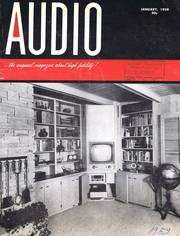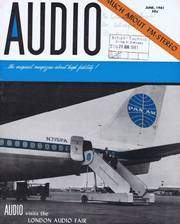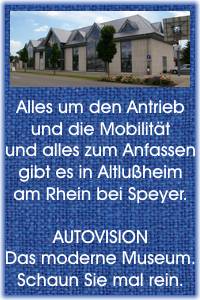Erläuterungen zu diesen US-AUDIO Seiten der 1950er Jahre
Die hier stehenden amerikanischen Artikel aus 1959 (aus der US-AUDIO) sind teilweise sehr gewöhnungsbedürftig, weil sie erstens aus einer längst vergangenen Zeit stammen und zweitens, weil dort in den USA ganz "anders" gedacht wurde als bei uns in Old Germany oder in Europa.
Vergleichbar mit unseren deutschen Hifi-Magazinen etwa ab 1962 ist jedoch, daß auch dieses Audio-Magazin ihre Anzeigen- Kunden und -Leser am Markt oder von anderen Magazinen (be- oder ab- ?) werben mußte. - Weiterhin sind die riesigen Dimensionen des amerikanischen Kontinents mit unseren hier in Europa nicht vergleichbar. - Ein Redaktions-"Trip" von New York nach Los Angeles oder Chicago oder gar in die Wüste nach Las-Vegas zu einer der CES- Audio- "Shows" war - auch mit dem Flugzeug - immer noch eine halbe Weltreise. Und jede Ausstellung oder "Messe" wurde als "Show" deklariert. Und natürlich, in USA musste alles "Show" sein, um beim Publikum einige Aufmerksamkeit zu erzeugen.
.
Die FM/UKW STEREO Entscheidung in den USA vom April 1961
Dieser einseitige Artikel in der US-AUDIO 06/1961 benennt keinen Autor und auch sonst nichts. - Es ist das Vorwort zu den nachfolgenden Artikeln über die Realisierung der Technik bei den Empfangsgeräten. Mitten im Text wird ausgeführt:
At least we didn't say "ALL about FM-stereo" on the front cover. - Wir haben auf der Coverseite absichtlich nicht gesagt : Alles über FM Stereo.
.
THE STEREO DECISION
After months of more or less patient waiting, high fidelity fans throughout the country were rewarded with the decision of the Federal Communications Commission on FM Stereo on April 19th 1961.
Now that the one system has been selected, we may all begin with our experiments toward building our own, or - and probably much simpler - start saving up the pennies to purchase one.
At least, there is no further doubt as to which system we shall be using, and it is quite likely that some of the industry's laboratories are working overtime in the search for the "most for the least."
The choice of a single set of standards for the transmission of the signal does not mean that only one type of "decoder" - a term which distinguishes from detector and discriminator, neither of which the device really is - will work. In fact, we already know of three different methods of doing the job, and there are undoubtedly several more.
In any case, we are presenting as much information in this issue as we could possibly acquire in just three weeks from decision to presstime. At least we didn't say "ALL about FM-stereo" on the front cover.
Drei ausführliche Artikel :
.
- Starting on (1961-June)-page 18, Managing Editor Saslaw gives us the background, delineates the actual F.C.C. order which specifies the standards, and describes both transmitting and receiving circuits with particular attention to the Zenith decoder.
- On (1961-June)-page 21, Daniel von Recklinghausen, H.H.Scott chief engineer, delves into mathematics and shows how the signal can be developed by any one of three methods, and how one of the methods can be used as the decoder.
- On (1961-June)-page 24, Antal Csicsatka and Robert M. Linz who did much of the development work at General Electric, describe the G-E decoder, along with still further background information.
.
Diese Ausgabe soll auf hohem technische Niveau erklären:
On the whole, we feel that this issue will serve as a sort of high-level primer to familiarize the audiofan with all of the aspects of FM stereo.
It appears that there are several difficult problems in making a decoder work with a minimum of distortion. That is to be expected - we have most recently gone through it with color television, and those circuits are certainly complicated enough; and before that, it was plain old black and white television (remember when there were 30 tubes in a TV set?) and so on as far back as radio itself.
There is not much doubt that the first decoders - and they will be in the form of "adapters" to be used with existing tuners - will work, and the integrity of the manufacturers guarantees that.
By the same token, it is certainly likely that the device will be simplified appreciably, particularly for complete radio sets, since their standards of performance will not approach those of component tuners and receivers.
Es sind von der FCC "strenge/harte"" Standards vorgegeben
The transmitting standards are quite severe, and rightly so. It is interesting to note that the frequency response of the main and subcarrier channels must be maintained within less than 0.5db throughout the range from 50 to 15,000 cps, and that the phase differences must be held within three degrees at the transmitter.
These standards are certain to ensure that the transmitted signal will be all that we could ask of it - it is now only necessary that our decoders be as good as the transmitters.
As to the advantages of FM stereo, very little need be said. One of the greatest, as we see it, is that it will now be possible to tape some good stereo music from the air. Heretofore about all we could do was to play recorded tapes, or to dub from stereo records.
We should soon be able to begin building up a stereo tape library, just as many of us have done on mono over the past ten years or so. We hope we can look forward to more live stereo broadcasting of good music than is currently available on mono, but that will depend on the listener reaction and the number of stereo receivers that are in use.
Anybody can speculate about anything - some prognosticators claim this is the end of the phonograph record, others that there will be a great boom in new tuners and receivers, in loudspeakers, and in tape recorders.
We doubt that the phonograph record will ever pass into the discard, at least within our lifetime. We honestly feel that there will be a considerably increased interest in FM reception, and that the over-all effect on the audio industry will be good.
We are not at all pessimistic, nor are we over-optimistic. We just look forward to further infusion of the desire for good music because of FM stereo, and this will give us a greater variety of programs from which to choose our musical entertainment.
Als Nachtrag eine Besonderheit - auch für Amerikaner
SEASON'S EVENTS BRING NEW KITS
This has been a busy Spring, what with hi-fi shows in Washington, San Francisco, Los Angeles, and London (we missed the one in Paris altogether)- (von Germany redet hier in 1961 noch keiner), and then the F.C.C. decision followed closely by the convention of the National Association of Broadcasters, also in Washington. But of the many things we have seen at all the shows, the one that impressed us most was a kit to end all kits - a 1000-watt AM transmitter in kit form.
This item was shown by Bauer Electronics Corporation at the NAB show, but we shall refrain from Profiling it, even though it does save some $1300 for an average of about 55 hours of assembly time. Can't do that well with any kits we have seen heretofore.
.
.



